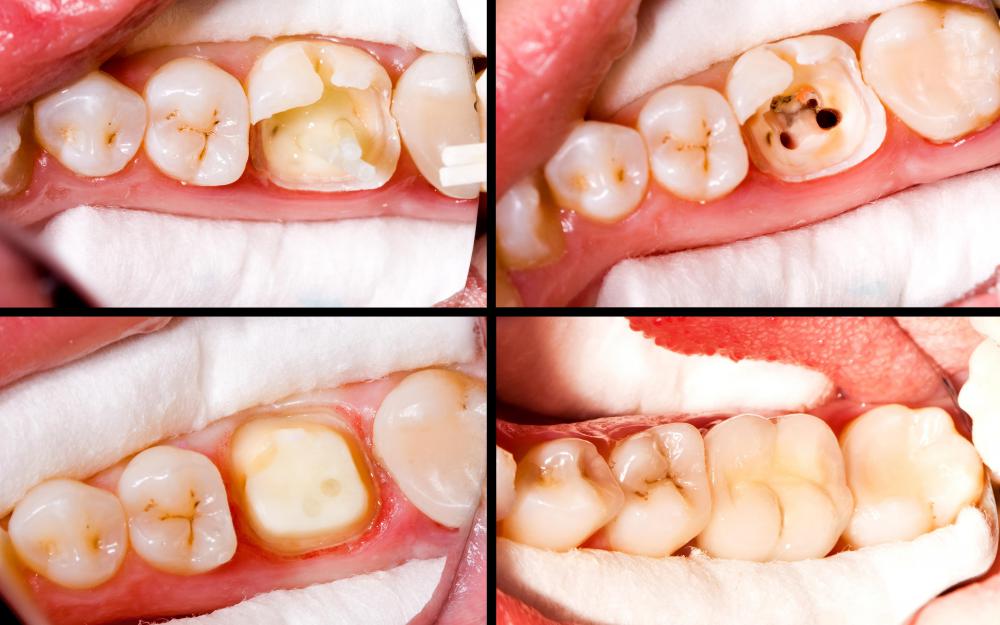At WiseGEEK, we're committed to delivering accurate, trustworthy information. Our expert-authored content is rigorously fact-checked and sourced from credible authorities. Discover how we uphold the highest standards in providing you with reliable knowledge.
What Is a Dental Diode Laser?
A dental diode laser describes a surgical instrument emitting energy via light beams and used to perform dental procedures without bleeding and with less discomfort. A diode laser contains a solid state semiconductor in its core that is stimulated to produce invisible infrared light. The light creates a thermal reaction on soft tissue, enamel, and bone, and the wavelength can be adjusted for different uses.
Dentists use a dental diode laser for restorative work and to treat periodontal disease. It replaces the scalpel, which reduces recovery time, the amount of bleeding, and the level of discomfort for the patient. It offers a precise instrument for the removal of diseased tissue and to reshape gums to create a more attractive smile.

Laser is defined as light amplification by stimulated emission of radiation. These devices produce a single-colored light as a source of energy. The dental diode laser is named for the source of energy contained in the center of the instrument. Other lasers might operate through carbon dioxide or crystals in the core optical cavities.
In patients with gingivitis, a form of periodontal disease marked by inflamed gums, the dentist might use a dental diode laser to reshape tissue surrounding individual teeth. The laser can be used to cut away excess tissue to balance the height and width ratio of individual teeth. This procedure might produce a more symmetrical smile.

Advances in technology make the dental diode laser a preferred instrument for the treatment of periodontal disease. Bacteria in the mouth might create deep pockets in gums, leading to bone loss. Dentists can remove the bacteria and diseased tissue with a dental diode laser device in mild to moderate cases. The procedure also promotes the growth of lost bone in some patients.
Lasers might also be effective to remove spots of decay on the surface of teeth. These instruments can cut through the hard tooth surface and eliminate an unsightly brown spot. This procedure can usually be done without anesthesia.
Two laser modes are available for medical and dental use. A dental diode laser emits a continuous light, while other laser devices use pulsating light energy for surgical procedures. Small glass fibers deliver the energy to the surgical site. Hollow tubes or rigid arms help the surgeon guide the laser to precise areas inside the mouth.
Advantages of lasers in dentistry include the preservation of healthy tissue and reduced time to recover from dental surgery. They eliminate the need for anesthesia and permit work near metal fillings or braces. Tips on the laser devices can be removed and sterilized for repeated use.
AS FEATURED ON:
AS FEATURED ON:












Discuss this Article
Post your comments